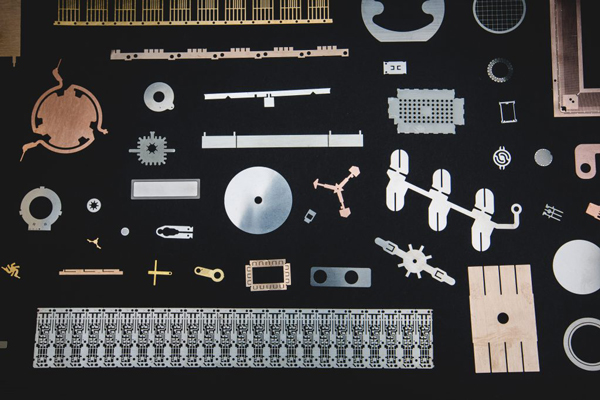
Stainless steel etching is a process that creates a pattern or text on the surface of stainless steel by chemical or physical means. A variety of chemicals are used in this process, each of which plays a specific role. The chemicals used in the stainless steel etching process and their roles are discussed in detail below.
First, one of the chemicals commonly used in stainless steel etching is the etching solution. The choice of etching solution directly affects the effect and quality of etching. Common etching solution has a ferric chloride-based formula, this etching solution has a strong oxidizing property, which can effectively corrode the surface of stainless steel to form the desired pattern. In addition, there is the use of nitric acid, hydrochloric acid, phosphoric acid and other configurations of aqua regia-type etching solution, this etching solution has a stronger corrosion ability, suitable for the etching depth of the higher requirements of the occasion.
However, the chemical components in these etching solutions are harmful to humans and the environment. For example, nitric acid and hydrofluoric acid are both highly corrosive acids, and they produce an irritating odor during use, causing damage to the human respiratory tract and skin. Therefore, when using these chemicals, it is necessary to wear appropriate protective equipment, such as protective gloves, protective goggles and respirators, to ensure the safety of the operator.
In addition to etching solutions, some auxiliary chemicals may also be used in the stainless steel etching process. For example, in order to improve the etching effect, some organic compounds can be added to the etching solution, such as formic acid. These organic compounds can improve the fluidity of the etching solution, making the etching process more uniform and efficient. However, it should be noted that organic compounds may produce toxic organic vapors when they are heated and decomposed, so the operating conditions need to be strictly controlled during use to avoid damage to humans and the environment.
In addition, after the stainless steel etching is completed, some cleaning agents need to be used to remove the etching solution and impurities left on the surface. These cleaning agents are usually water-based or organic solvent-based, can effectively remove surface dirt, so that the stainless steel surface to restore the smooth. However, it is also important to note that some cleaning agents may be harmful to the human body and the environment, so caution is required in the selection and use.
In summary, there are a wide variety of chemicals used in the etching process of stainless steel, and each has its specific role. In order to ensure the safety of operation and the quality of etching, we need to fully understand the nature and use of these chemicals, and in the use of the process of strict compliance with relevant safety regulations and operating procedures. At the same time, with the progress of science and technology and environmental awareness, the chemicals used in the future stainless steel etching process will also be more environmentally friendly and efficient direction.
Contact: andy_Lai
Phone: 18938693450
E-mail: yw9@zldsmt.com
Add: Building A3, Huafa Industrial Park, Fuyong Town, Fuyuan Road, Fuyong Town, Baoan District, Shenzhen,China